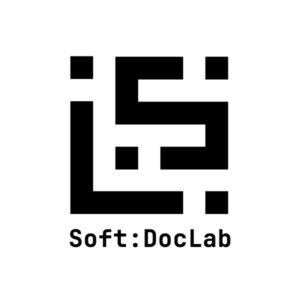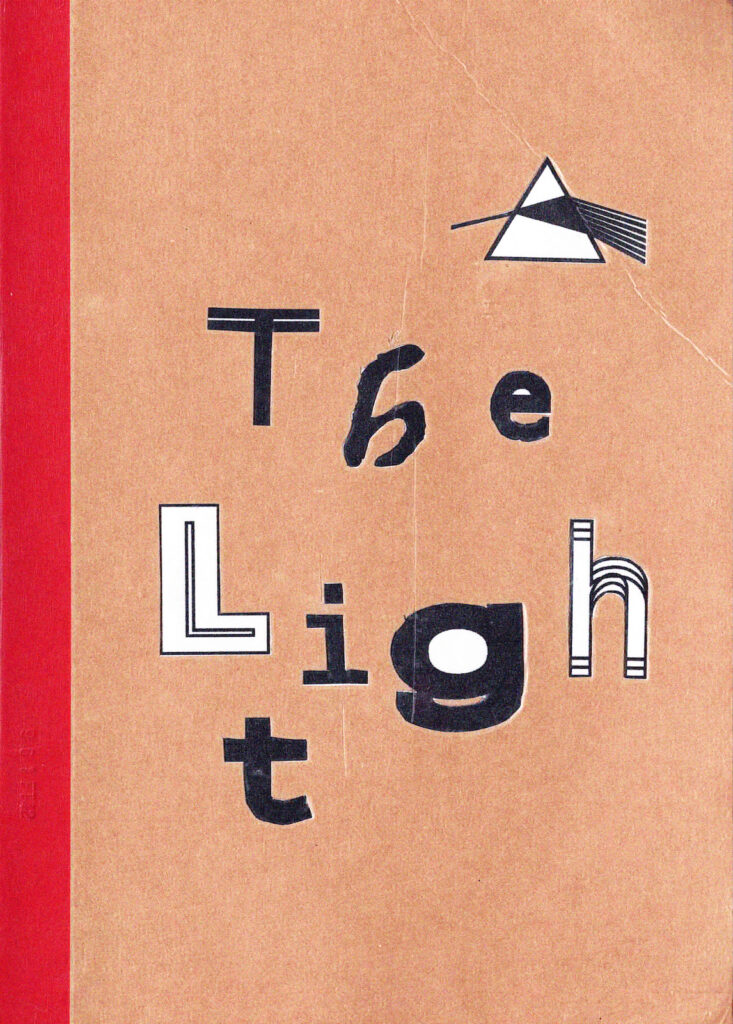
The Light_Word
2021.11
致穎 Chih Ying
英文翻譯—劉培安 Liu, Pei-An
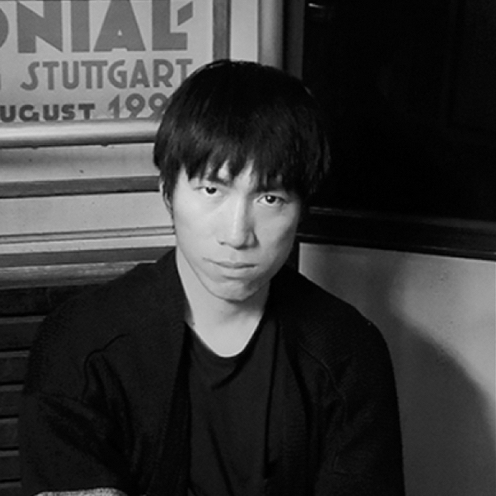
致穎(1985年生於台北,台灣)善於使用不同媒材,諸如影像、攝影或是裝置來探討人和公共空間的相互關聯。資本如何改變人類生活習慣及作息是他關注的美學命題,例如在最近的計畫中,他嘗試利用歷史研究來討論埋藏於日常空間和流行文化下的後殖民和後移民意識形態,並藉此作為對整體當代社會的資本研究。致穎曾參與許多國際性的展覽計劃,例如「2016台北雙年展」於台北市立美術館、 「2014上海雙年展:社會工廠」 於上海PSA當代藝術博物館、「Place an Image / Place in Image」於德國柏林攝影博物館、「2012台灣美術雙年展」於台中國立美術館等等。此外,他也經常於藝術雜誌撰寫文章及評論,並且同時為台灣藝術團體 「復興漢工作室」的成員。
Musquiqui Chihying, under the exhibition framework “Modern Life is Dull,” puts forth three video and installation works: The Alp, The Jog, and The Toyota. The artist, in a humorous manner, explores the underlying mental and behavioral habits in daily life, in an attempt to apply Michel de Certeau’s concept of the tactics of everyday life to challenge the behavioral patterns of the capitalist world. Musquiqui Chihying says, “The tactics of everyday life is an art of the weakling to bypass the dominance of power in circuitous ways. I try to pinpoint the capitalist nature in the life circle of human beings and conduct the audience to rethink the habits shaped by the strategies of systems and social norms.
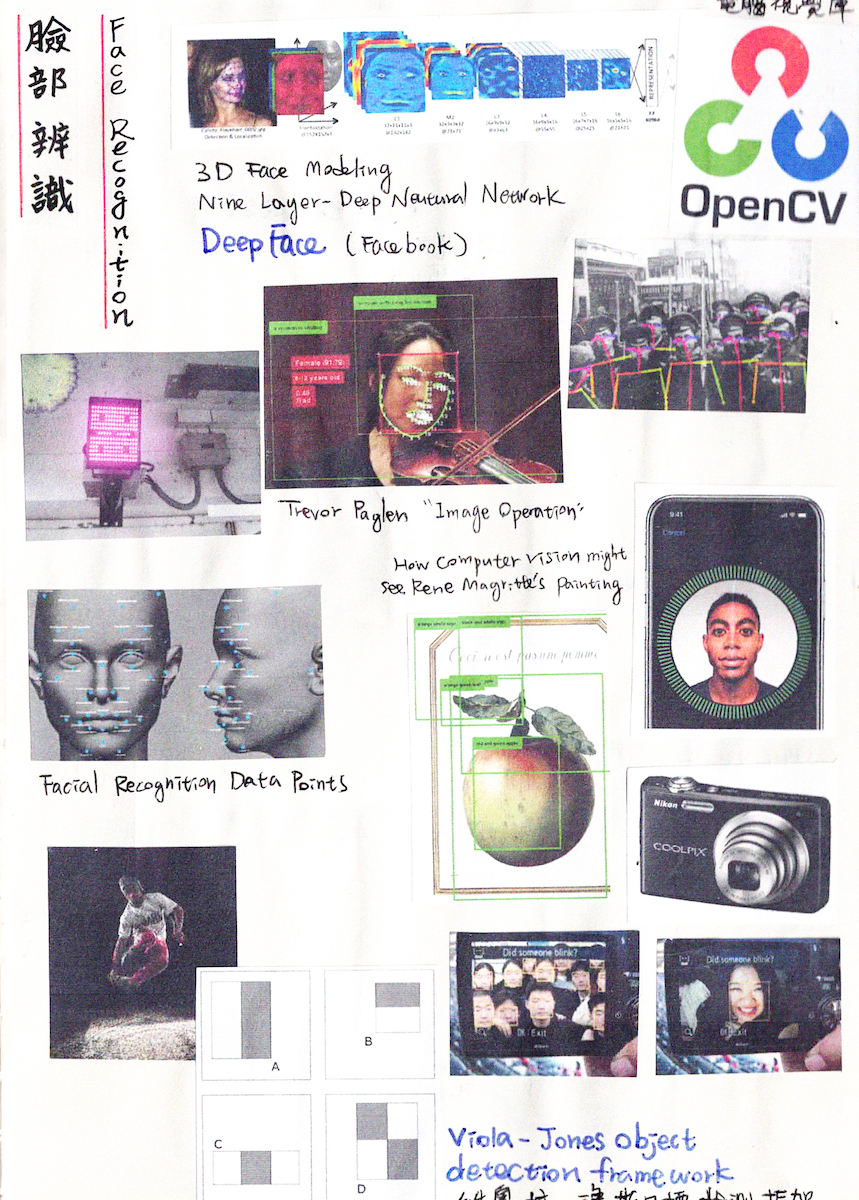
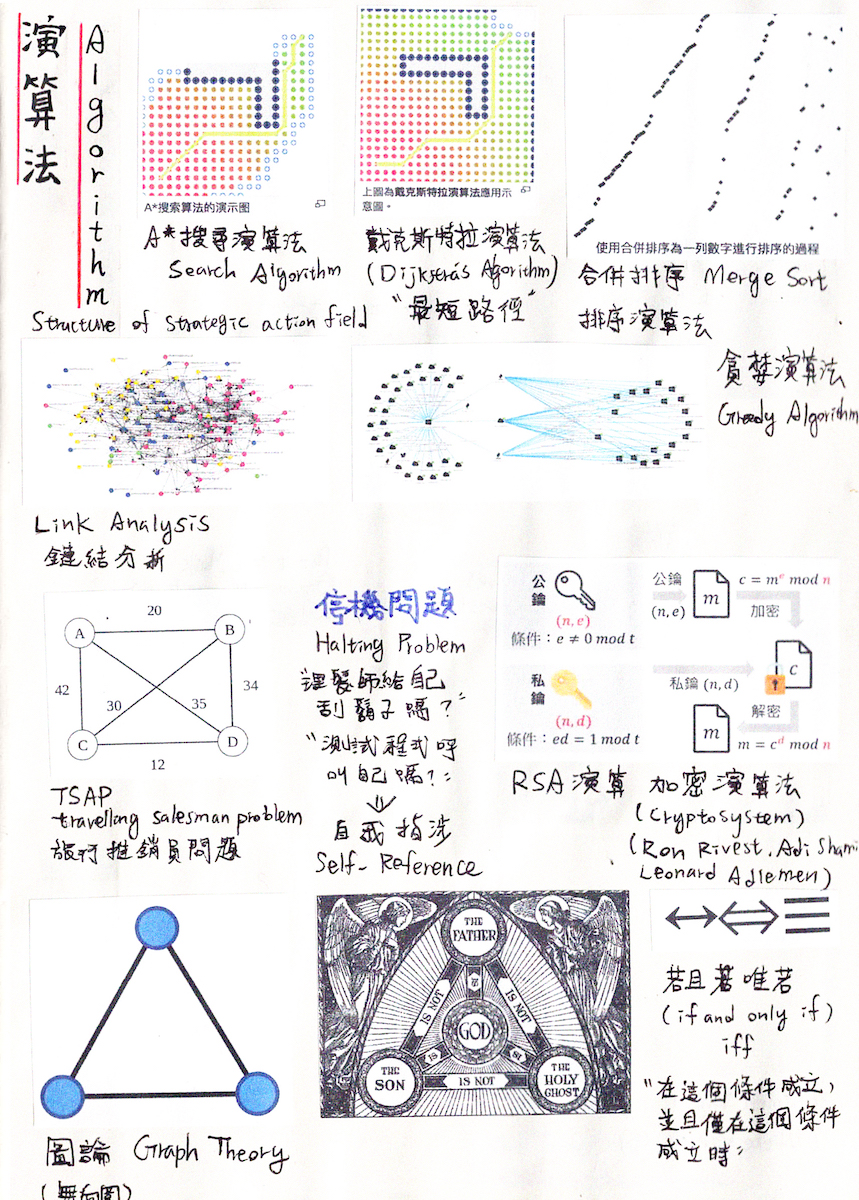
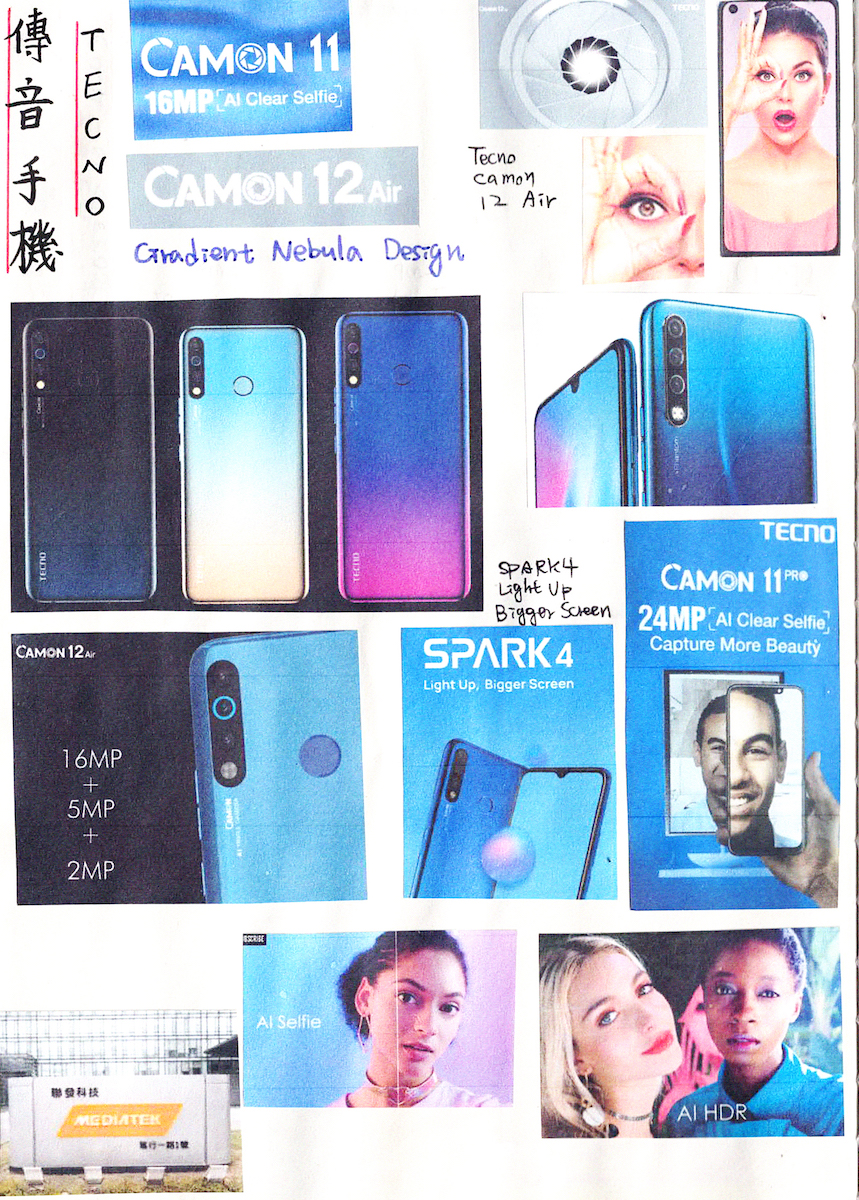
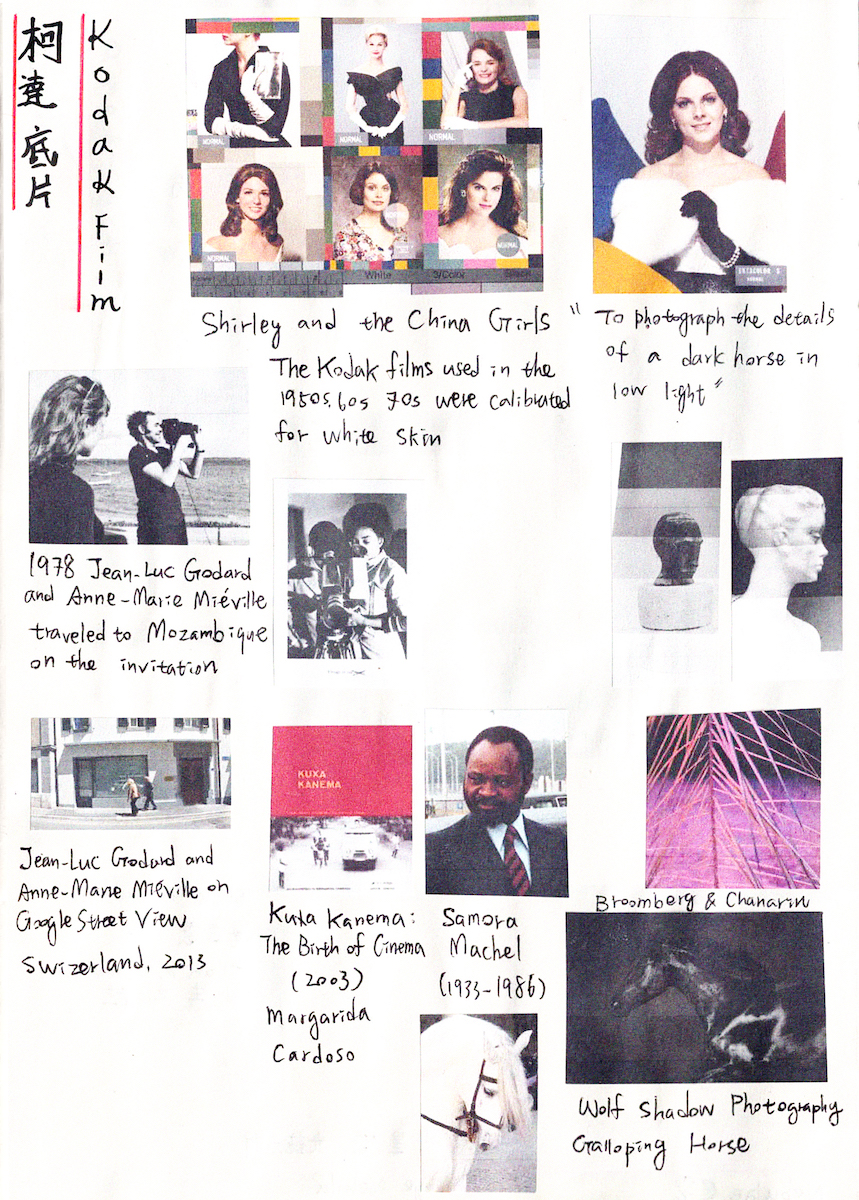
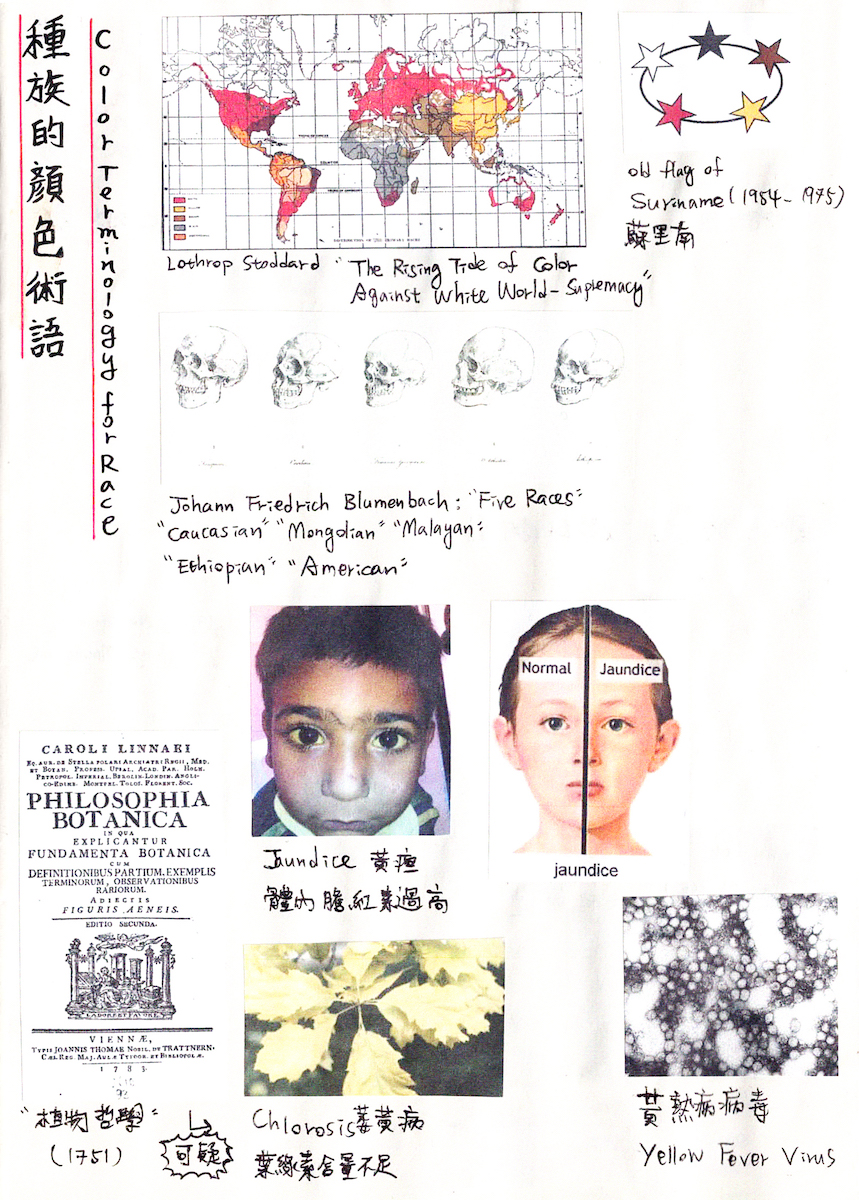
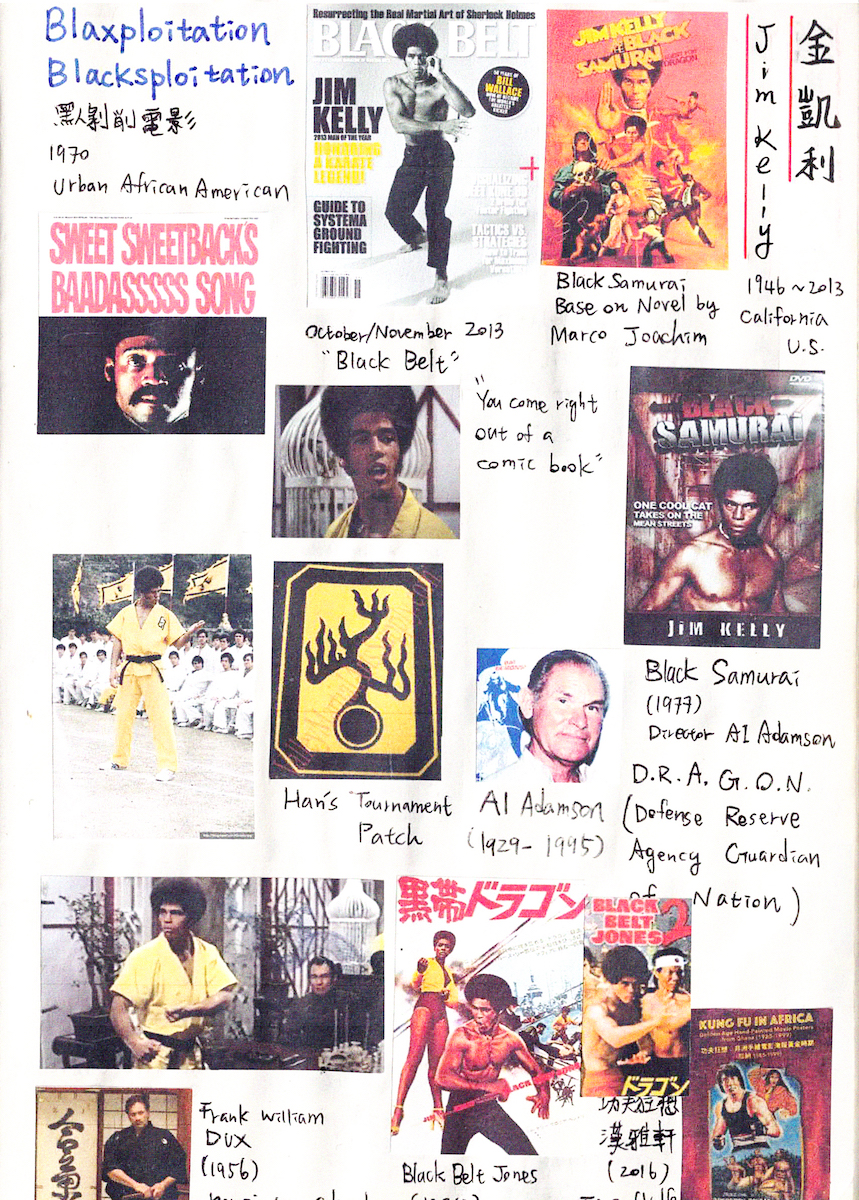
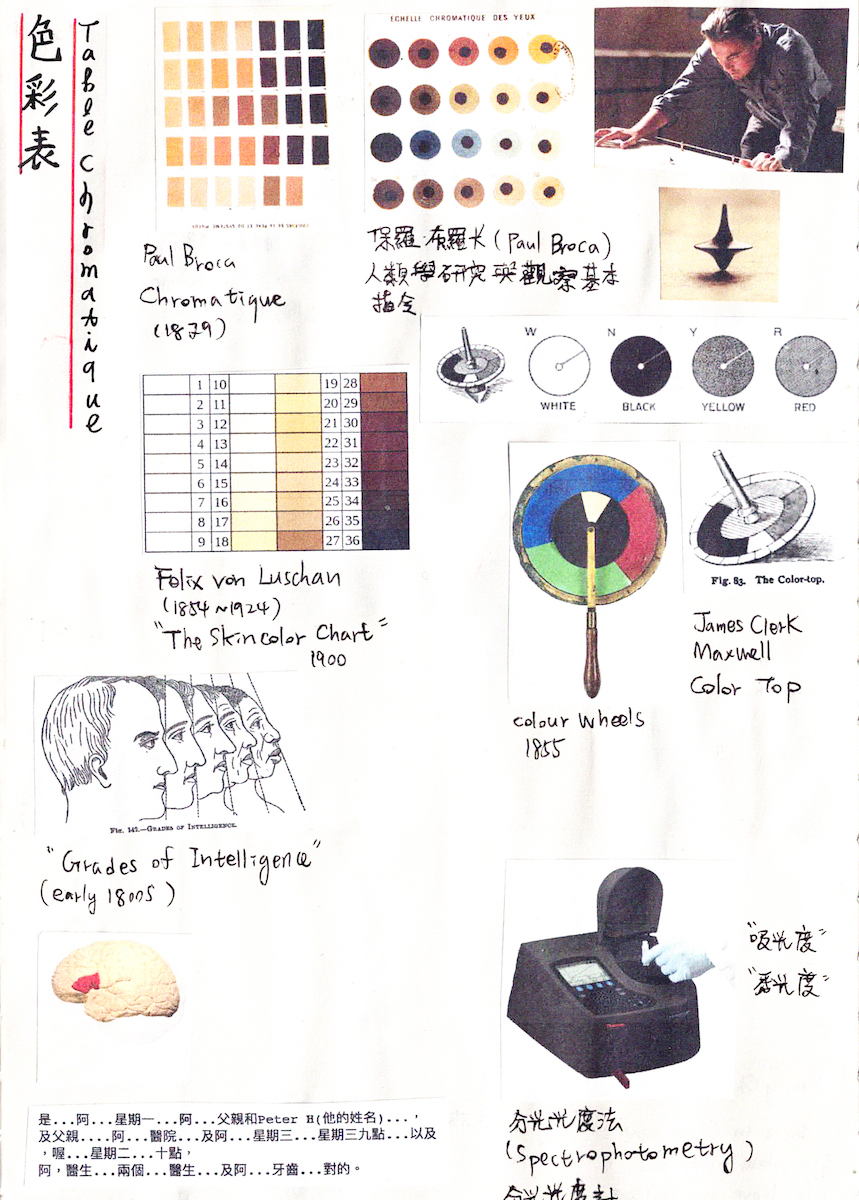
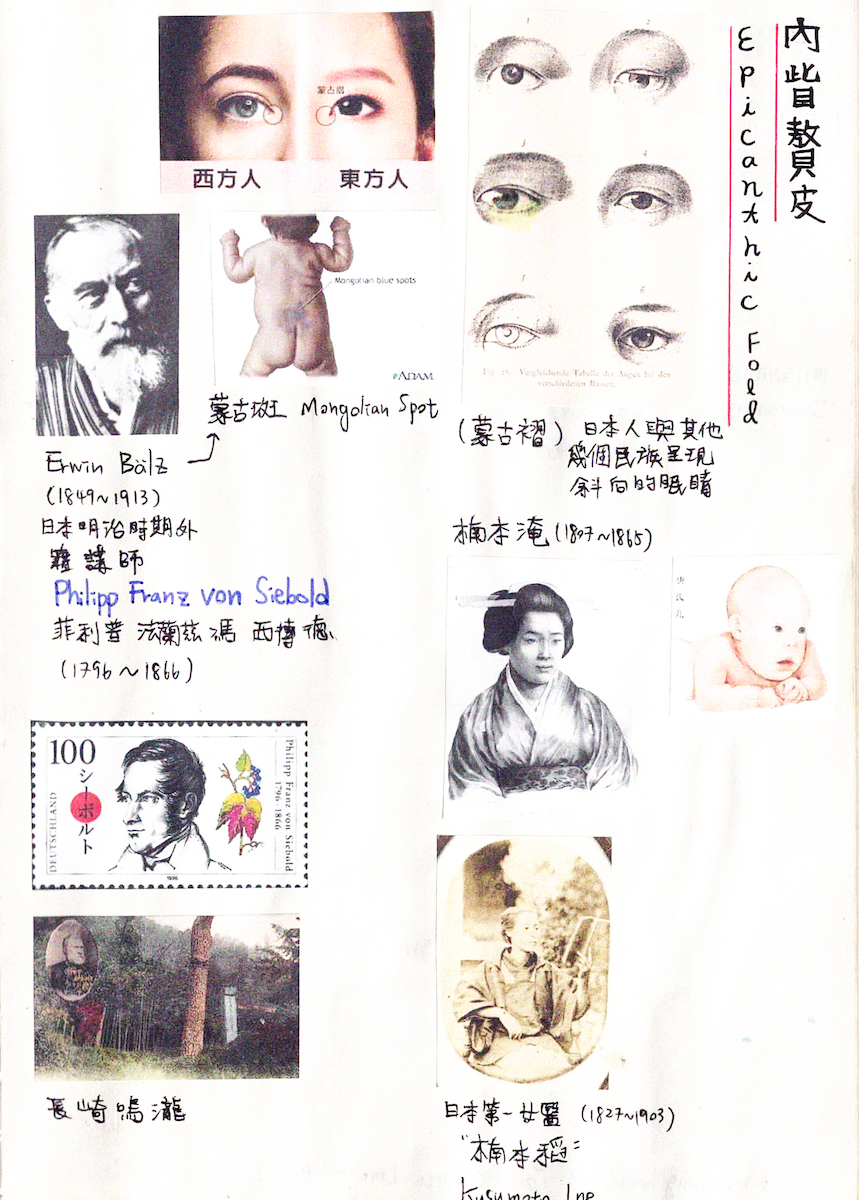
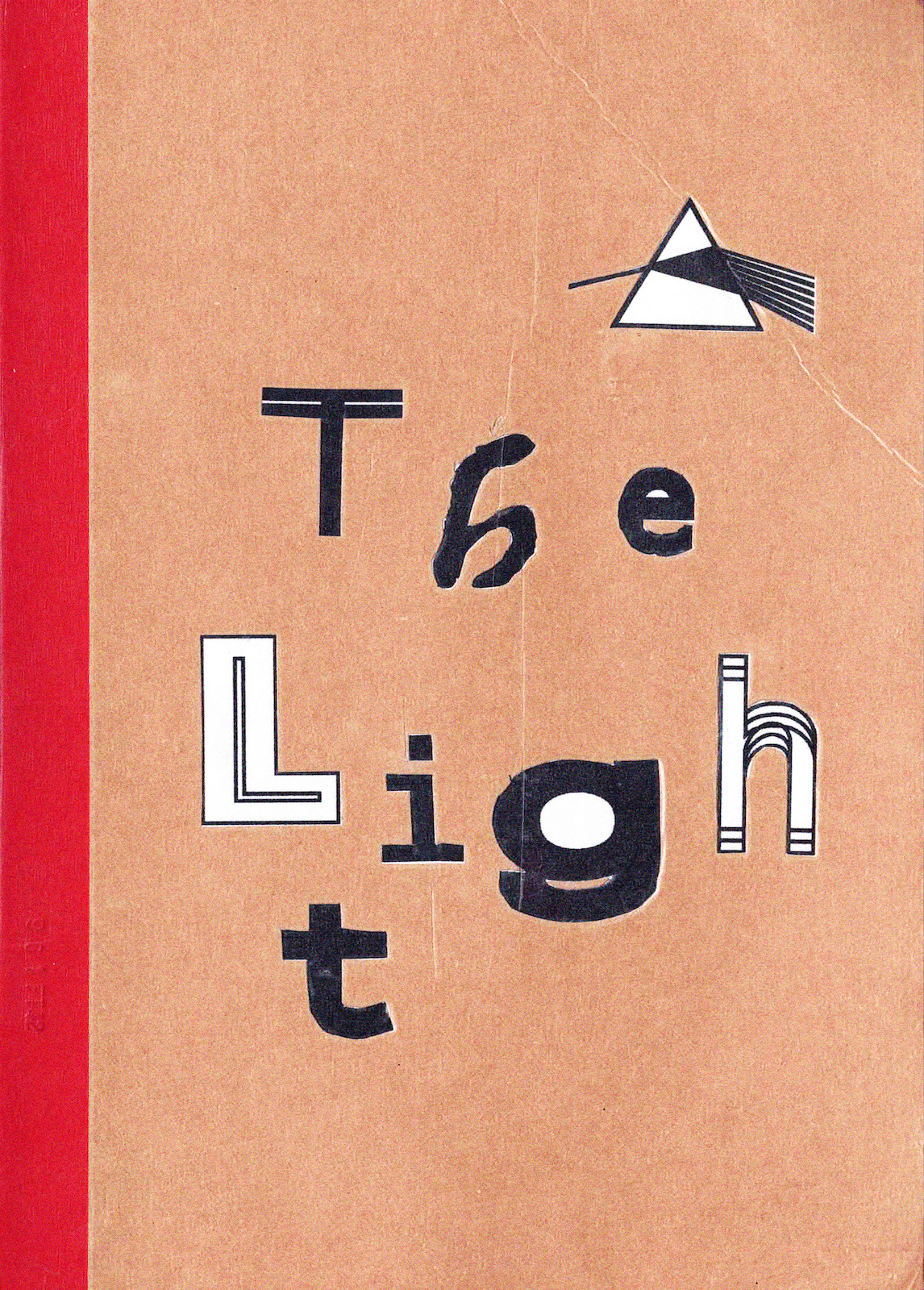

The Light
透過圖像思考是視覺藝術創作者習以為常的工作。為了能夠在系統性的圖像搜集與跨文本的閱讀上尋找靈感,我時常為進行中的研究計畫製作剪貼簿。這些剪貼簿以關鍵字區分專題,它們或許與研究內容有直接的關聯性,又或僅僅只是展呈及拍攝形式考察。對我來說,這些剪貼簿最重要的功能,是允許我能夠更清楚且快速地與合作夥伴交換訊息及想法,例如讓攝影師一眼明瞭拍攝的細節等等。在這裡,我從近期進行中的剪貼簿“The Light”中選出八面草稿作為範例,並且簡短標示出圖像的相關內容。The Light的研究內容最終支持了影像作品“打光(The Lighting)”的製作工作,而且,它也將持續協助未來其他作品的推展。
Thinking through images is a common practice for visual artists. In order to find inspiration for systematic image gathering and inter-textual reading, I often create clipboards for ongoing research projects. These clipboards are themed by keywords, which may be directly related to the research, or simply an exhibition and photographical forms for examination. For me, the most important function of these clipboards is to allow me to exchange information and ideas more clearly and quickly with my partners, for example, to give photographers a glimpse into the details of a shoot, and so on. Here, I have selected eight drafts from the clipboard, “The Light,” and briefly labeled the related content of images. In “The Light,” the study ultimately supports the image production of “The Lighting;” besides, it will continue to assist in the development of other works in the future.
臉部辨識(Face Recognition)
在研究初期階段,我嘗試先釐清電腦視覺的基本運作邏輯,以及不同檢測框架間的運算差異等。也就是在這個時間點,我意識到餵養什麼樣的資料會直接影響到視覺生成的效果,也可以是讓電腦形成某種視覺偏好。臉部辨識的效能直接影響到運算特效的投放範圍,因此不能將之等同於濾鏡效果,畢竟如果電腦無法辨識五官的位置,也就不能針對特定的臉部輪廓給予適當的運算。
In the preliminary stage of research, I tried to clarify the basic logic of computer vision and the computational variances between different detection frameworks. It was at this point that I realized the kind of data will directly influence the effect of visual generation, and let the computer form a certain visual preference. The effectiveness of face recognition has a direct impact on the range of computational effects that can be applied; therefore, it cannot be equated to a filter effect. After all, if the computer cannot recognize the position of the facial features, it cannot give the appropriate computation for a particular facial contour.
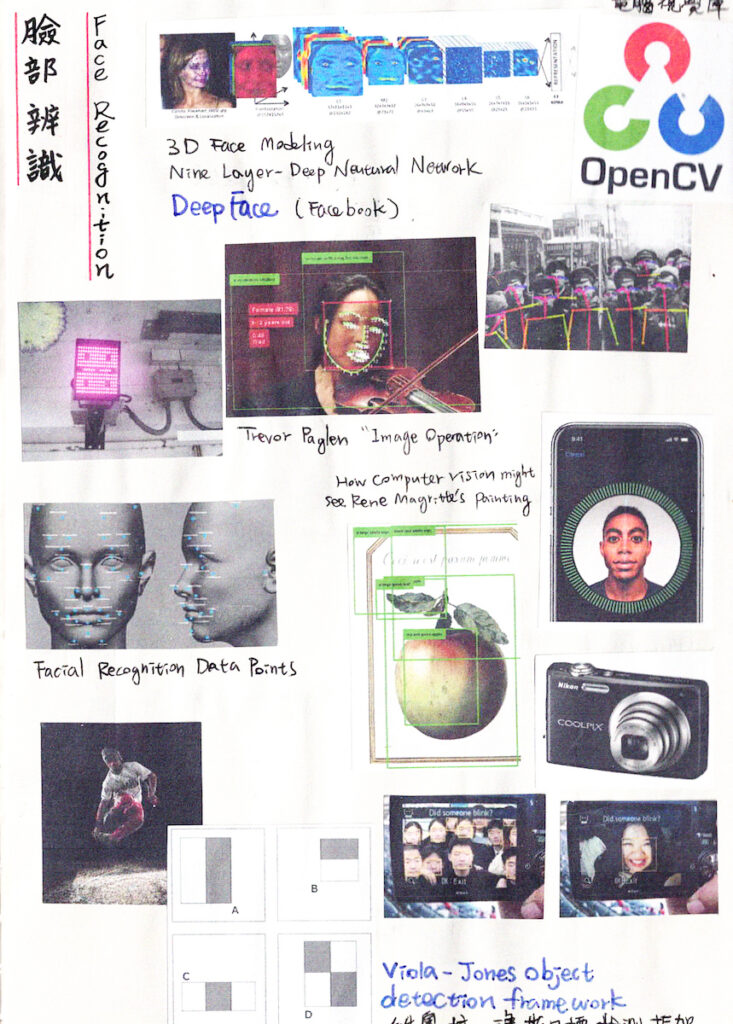
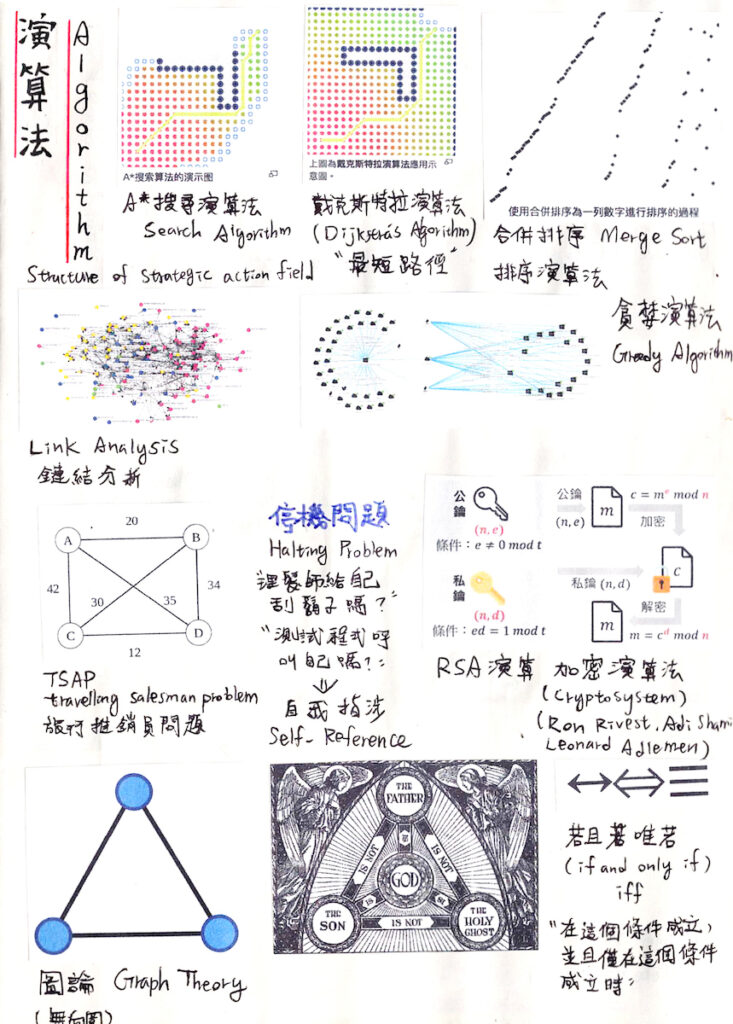
演算法(Algorithm)
演算法可以說主宰了數位圖像的生產方式,尤其在計算攝影(Computational Photography)持續提高效能的情況下,尋求優化的運算逐漸成為當代攝影技術所追逐的目標。演算法的設計能夠直接影響數位相機追蹤臉部範圍所呈現的結果,當然,如同先前提到的,它也如實反映了設計者的偏見。值得一提的是,處理數學的圖論標示方式和現今智慧型手機流行的三鏡頭組相機設計啟發了作品“打光”的三面圓形投影設計。
Algorithms can be said to dominate the way digital images are produced, especially as Computational Photography continues to improve efficiency. The search for optimized computation is becoming the goal of contemporary photographic technology. The design of algorithms can directly influence the results of digital camera tracking of the face range, and certainly, as mentioned earlier, it also reflects the prejudice of the designer. It is worth noting that the marking way of the graph theory in math and the triple-lens camera design that is popular in today’s smartphones inspire the three-dimensional circular projection of the work “The Lighting.”
傳音手機(TECNO)
在多次前往西非洲進行田野調查時,我注意到了在非洲極為普及的傳音手機,也因此開始進行資料彙整工作。傳音手機為中國廠牌傳音控股旗下特別針對非洲市場開發的產品,該公司特別請臺灣的聯發科提供相機演算法技術的解決方案。透過當時任臺北當代藝術中心策展人的徐詩雨的介紹,我幸運地認識了該項目的負責人王書凡博士,並且進行了錄影訪問。內容除了著重在如何改善相機演算法的工作外,同時也請書凡分析了演算法偏見形成的可能原因。
During several fieldworks in West Africa, I noticed the extremely popular TECNO in Africa and started to collate information. TECNO is a product developed by the Chinese company Transsion Holdings for the African market, and the company asked MediaTek Inc. in Taiwan to provide a solution for the camera algorithm technology. Through the introduction of Shih-yu Hsu, who was the curator of the Taipei Contemporary Art Center at the time, I was lucky enough to meet the project’s director, Dr. Shu-fan Wang, and had a video interview with him. The content not only focused on how to improve the camera algorithm, but also asked Shu-fan to analyze the possible causes of the algorithm bias.
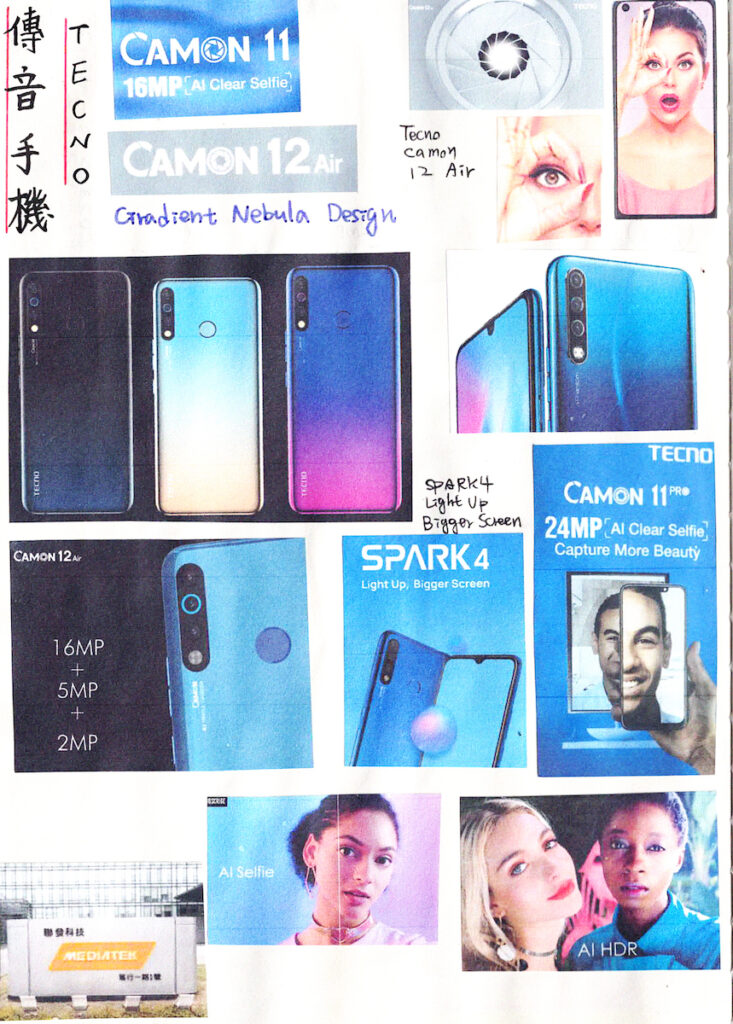
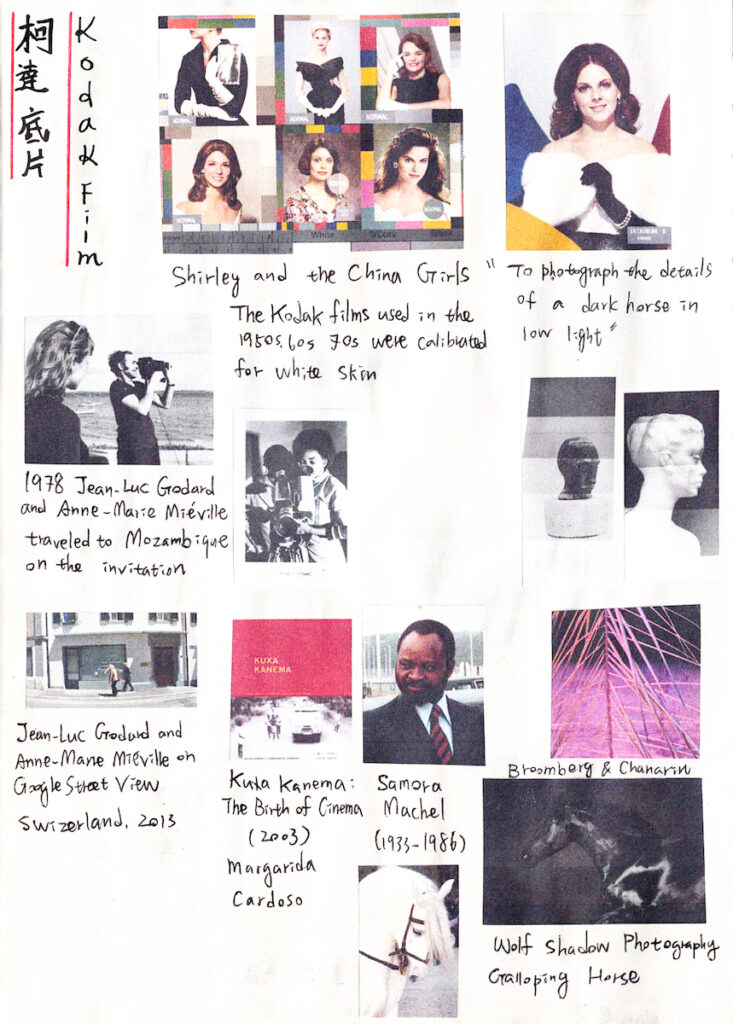
柯達底片(Kodak Film)
在類比式攝影當道的時期,柯達底片無疑是全球重要的攝影媒介之一。當時有效的校色設備還未齊備,為了能夠讓世界各地的相片輸出有所依據,雪莉卡(Shirley Cards)應運而生。早期的雪莉卡皆以西方白人女性為模特兒,這也造成了膚色標準的嚴重偏差。事實上,即便進入到數位攝影的年代,類似的問題依然存在,具體的例子大概就算是那張在早期數位影像研究中著名的萊娜圖(Lenna)了。
At a time when analog photography was the trend, Kodak Film was undoubtedly one of the most important photographic media in the world. At a time when effective color calibration equipment was not completely developed, Shirley Cards emerged into being. In the early stages of Shirley Cards, they used Western white women as models, which led to a serious deviation in skin color standards. In fact, even in the age of digital photography, similar problems still exist, a concrete example of which is the famous Lenna in early digital photography studies.
種族的顏色術語(Color Terminology for Race)
種族的想像和“邊界”、“國家”或是“共同體”的概念相去不遠。然而殊難想像的是,18世紀西方對於種族和地理分布的類型學研究,卻仍然主宰了今天我們看待人類族群的方式,甚至間接或直接地造成了毫無必要的衝突。研究種族的顏色術語並非要完全取消已然根深蒂固的膚色概念,更多的是藉由觀察這些術語發展,例如亞洲人是如何在西方的文獻描述中從淺膚色逐漸轉變成黃色等,來解構當代政治與社會的病徵。
Racial imagination and the concept of a border, a country or a communality are closed. Yet it is inconceivable that the 18 century Western typologies of racial and geographical distribution continue to dominate the way we view human communities, even indirectly or directly, creating unnecessary conflicts. The study of Color Terminology for Race does not seek to abolish the inveterate concept of skin color, but rather to deconstruct contemporary political and social pathologies by observing the development of these terms, such as how Asians have gradually shifted from light skin color to yellow in Western literature.
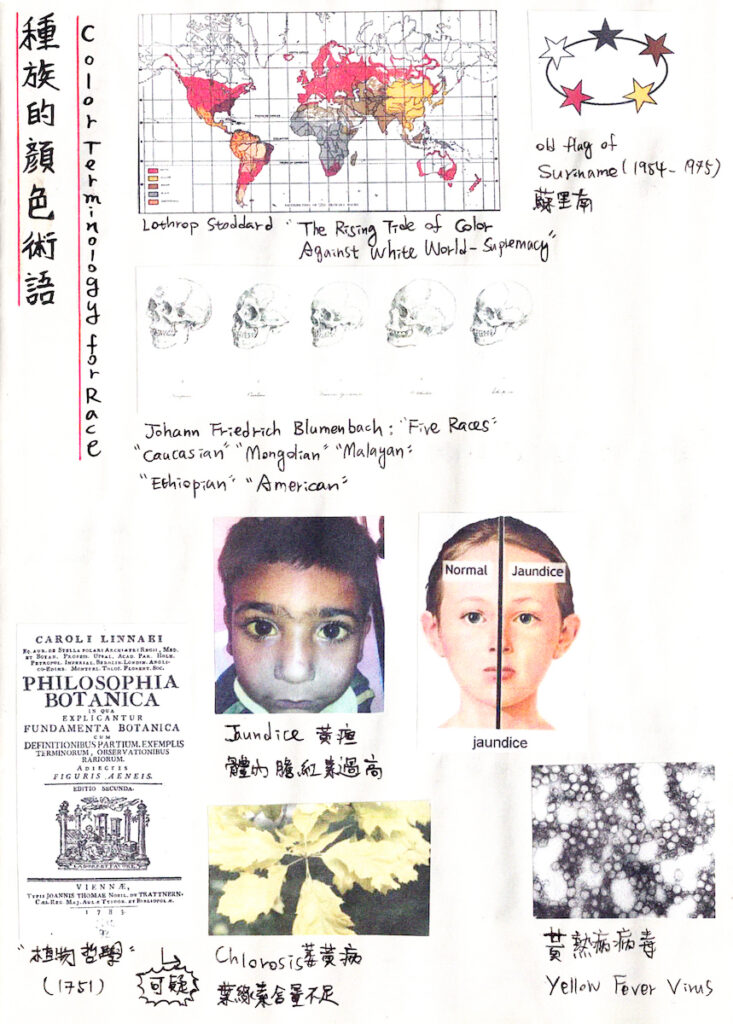
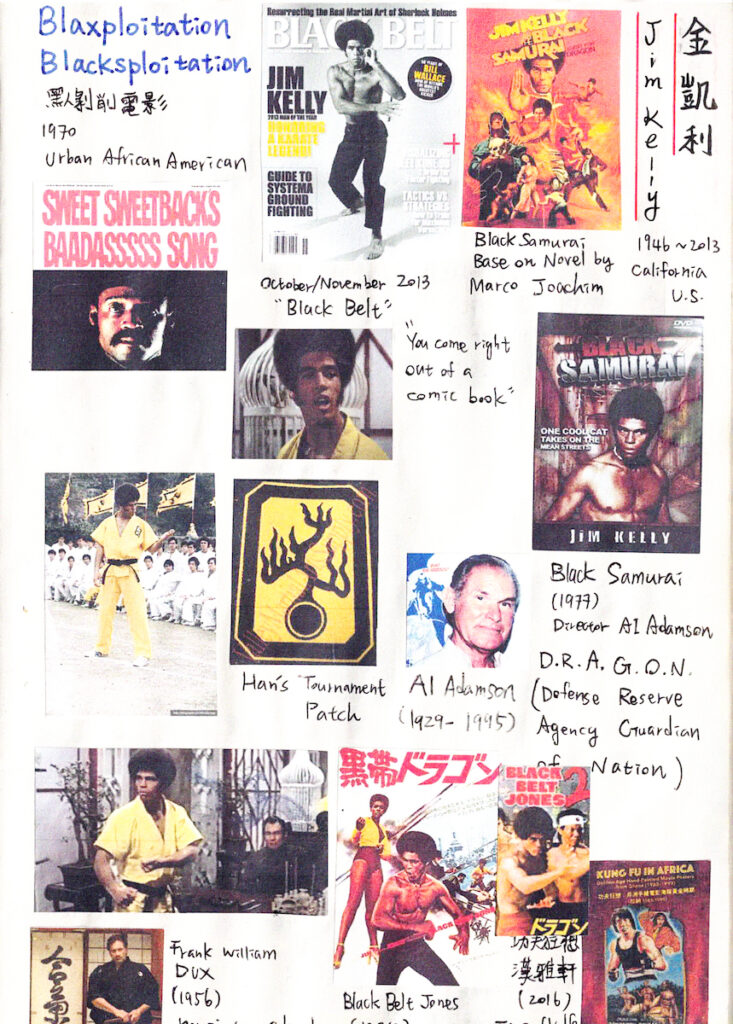
金凱利(Jim Kelly)
金凱利為著名美國武打明星,於70年代的黑人剝削電影(Blaxploitation)風潮中開始展露頭角,並且於1973年正式參與了李小龍電影“龍爭虎鬥“(Enter the Dragon)的演出。電影有一幕令我印象特別深刻,其中由金凱利所飾演的威廉斯(Williams)在許多亞裔功夫選手注目之下,身著黃色道服示範格鬥技巧。這樣的設定反轉了功夫僅屬於亞洲人的刻板印象,也引導了我去重新思考“功夫流感”(Kung Flu)這樣充滿爭議的詞彙是如何在具有歧視性的意識形態下被發明出來。
Jim Kelly was a famous American martial arts star, well-known for the Blaxploitation in the 70’s. And in 1973, he was officially cast in Bruce Lee’s “Enter the Dragon.” I was particularly impressed by a scene in which Williams, played by Jim Kelly, dressed in a yellow suit and demonstrated fighting skills in front of many Asian kung fu fighters. This reverses the stereotype that kung fu is only for Asians, and led me to rethink “Kung Flu ” and how such a controversial term was invented in a discriminatory ideology.
色彩表(Table Chromatique)
這裡所搜集的色彩表多為測量人類特徵所使用的度量標準,例如膚色和虹膜色彩等。其中分別由保羅·布羅卡(Paul Broca)及詹姆士·克拉克·馬克士威(James Clerk Maxwell)所製作的色票及彩色陀螺格外引起我的興趣。原因在於,這些工具體現了那份將人種分類的渴望。除此之外,我們其實很難找到什麼實際的用途。當然,今天我們用來測量因病變所導致的生理色彩變化則是在不同的脈絡及技術下發展出來的。
The Table Chromatique collected here are mostly criteria used to measure human characteristics, such as skin color and iris color. I am particularly interested in the color cards and color tops made by Paul Broca and James Clerk Maxwell, for these tools reflect the desire to classify the human race. Besides, it is difficult to find any practical use for them. Nowadays, certainly, we use them to measure physiological color changes due to pathological changes, which are developed in different contexts and techniques.
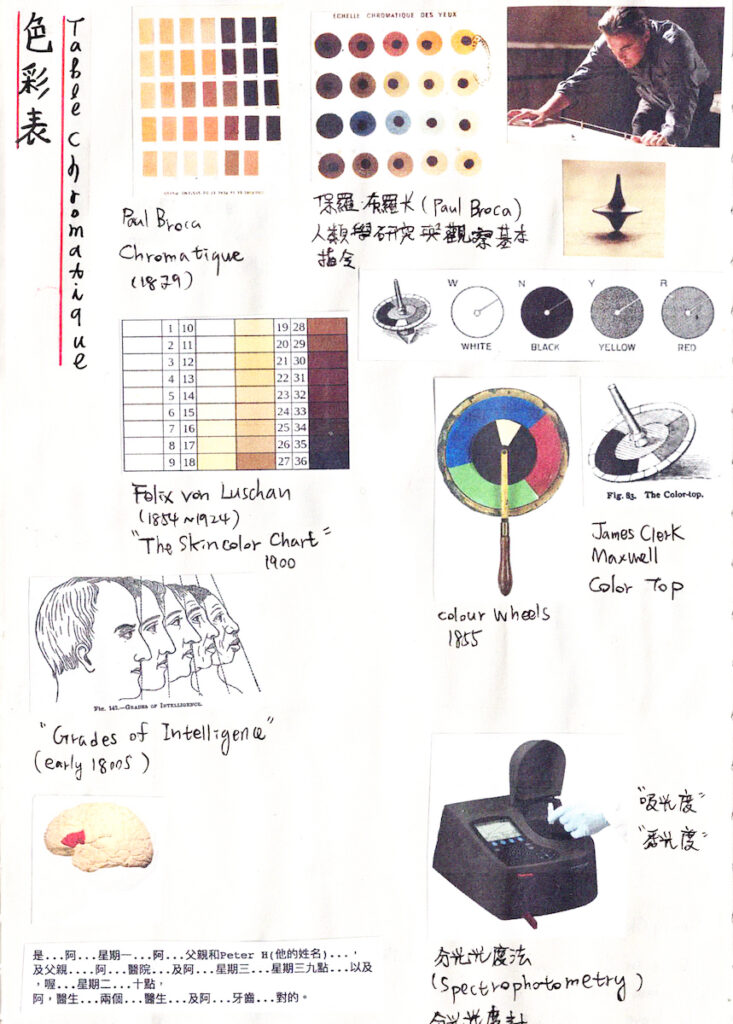
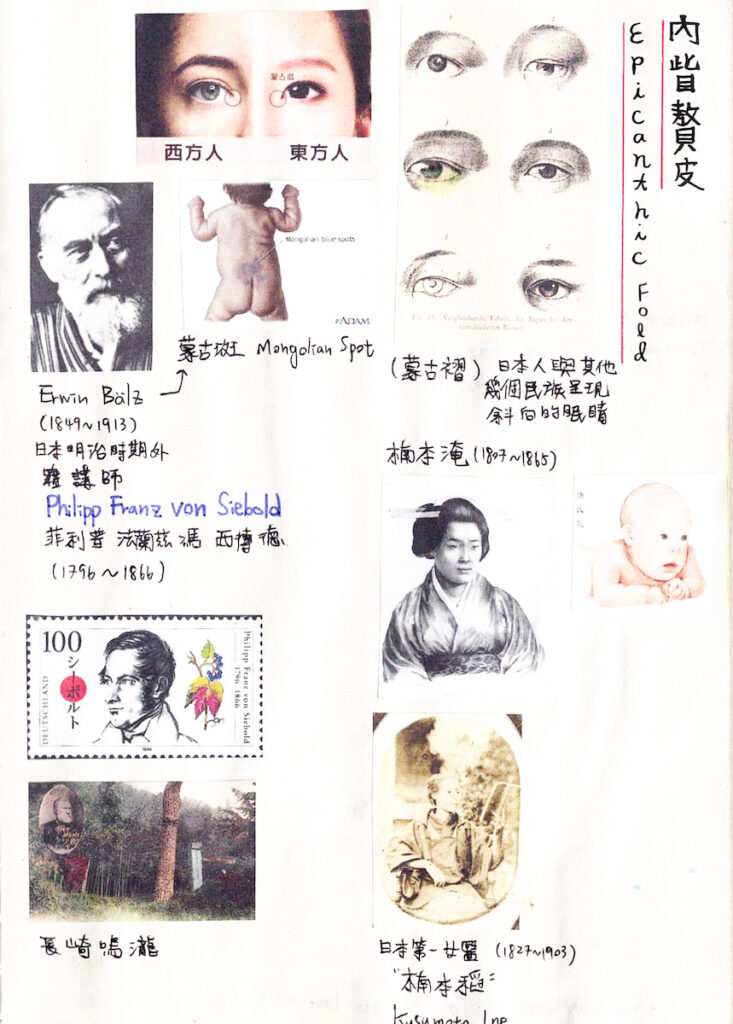
內眥贅皮(Epicantnic Fold)
有很長一段時間,亞洲人的眼睛特色被西方人認為是某種生理“缺陷”。而曾經出版相關研究書籍的菲利普·法蘭茲·馮·西博德(Philipp Franz von Siebold)則將亞洲人的“斜”眼睛描述成是由扁塌的鼻子所造成,也因此產生了“多餘的”皮摺。我們能夠在西方影像史上看到許多黃臉(Yellow Face),亦即西方人將自己“裝扮”成亞洲臉孔並特別去塑造這種眼睛構造,由克里斯多福·李(Christopher Lee)在60年代所出演的傅滿洲(Fu Manchu)就是最鮮明的例子。
For a long time, Asian people’s eye characteristics were considered by Westerners as a kind of physical “disability.” Philipp Franz von Siebold , who had published a book on related studies, described the Asian’s “squinted” eyes as the result of a flattened nose, thus creating “redundant” epicantnic folds. We can see a lot of Yellow Faces in the history of Western photography, i.e, Westerners “dressing up” with Asian faces and specifically decorated with this eye structure. The character of Fu Manchu, who is played by Christopher Lee in the 60s is the clearest example.
